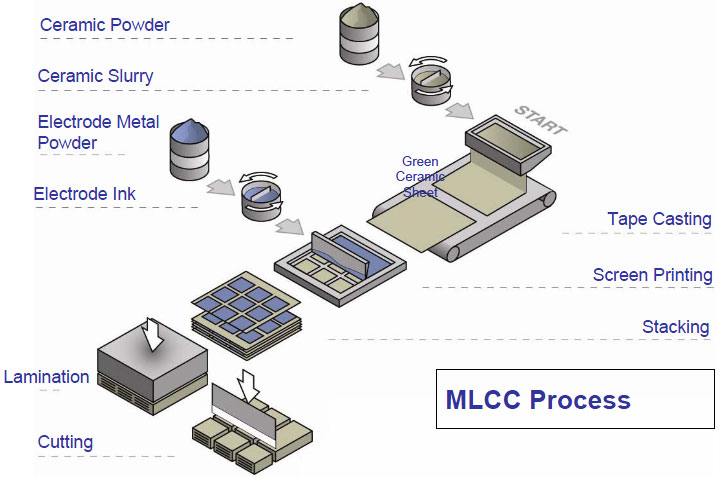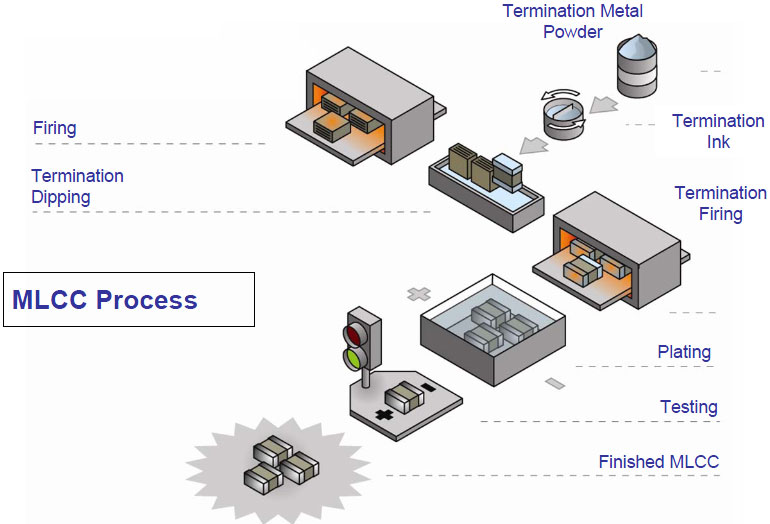
- +86 18120750932
- colin@xmsinuowei.com
- www.xmsinuowei.com

Ceramic Capacitor Basics
A capacitor is an electrical device that stores energy in the electric field between a pair of closely spaced plates
Capacitors are used as energy-storage devices, and can also be used to differentiate between highfrequency and low-frequency signals. This makes them useful in electronic filters
Capacitance Value: Measure of how much charge a capacitor can store at a certain voltage
MLCC: Multilayer Ceramic Chip Capacitor. Layers of ceramic and metal are alternated to make a multilayer chip
Capacitors are devices that store energy in the form of an electric field. They can also be used to filter signals of different frequencies. The capacitance value is an indicator of how much electrical charge the capacitor can hold.
Multilayer ceramic capacitors consist of alternating layers of ceramic and metal.

The process of making ceramic capacitors involves many steps.
l Mixing: Ceramic powder is mixed with binder and solvents to create the slurry, this makes it easy to process the material.
l Tape Casting: The slurry is poured onto conveyor belt inside a drying oven, resulting in the dry ceramic tape. This is then cut into square pieces called sheets. The thickness of the sheet determines the voltage rating of the capacitor.
l Screen Printing and Stacking: The electrode ink is made from a metal powder that is mixed with solvents and ceramic material to make the electrode ink. The electrodes are now printed onto the ceramic sheets using a screen printing process. This is similar to a tshirt printing process. After that the sheets are stacked to create a multilayer structure.
l Lamination: Pressure is applied to the stack to fuse all the separate layers, this created a monolithic structure. This is called a bar.
l Cutting: The bar is cut into all the separate capacitors. The parts are now in what is called a 'green' state. The smaller the size, the more parts there are in a bar.
l Firing: The parts are fired in kilns with slow moving conveyor belts. The temperature profile is very important to the characteristics of the capacitors.
l Termination: The termination provides the first layer of electrical and mechanical connection to the capacitor. Metal powder is mixed with solvents and glass frit to create the termination ink. Each terminal of the capacitor is then dipped in the ink and the parts are fired in kilns.
l Plating: Using an electroplating process, the termination is plated with a layer of nickel and then a layer of tin. The nickel is a barrier layer between the termination and the tin plating. The tin is used to prevent the nickel from oxidizing.
l Testing: The parts are tested and sorted to their correct capacitance tolerances.
l At this point the capacitor manufacturing is complete. The parts could be packaged on tape and reel after this process or shipped as bulk.


Service online